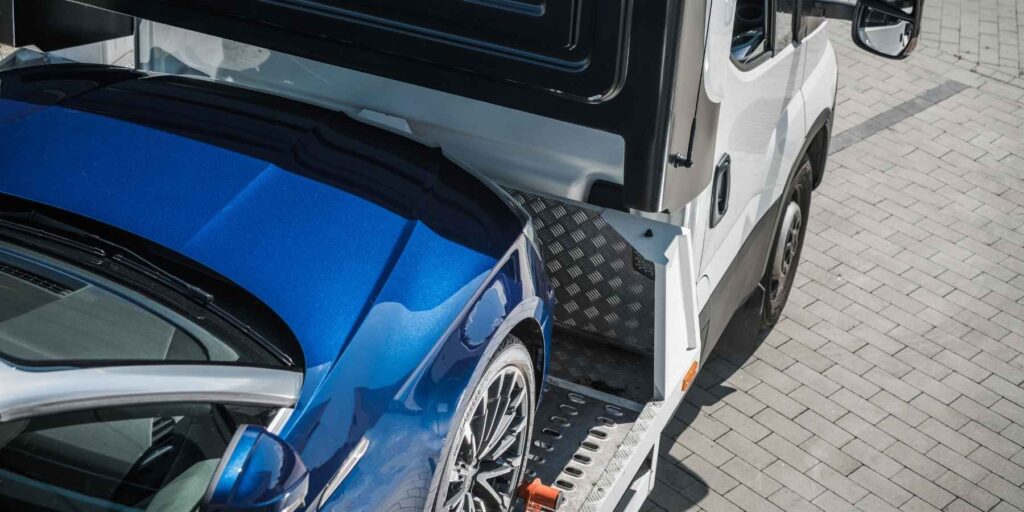In Shan Twins, Inc. v. Wells Fargo Bank, N.A., a federal court upheld the repossession of a Tesla Model X financed by Wells Fargo Bank, after the customers defaulted on their loan payments. The case, decided in the Oregon Eastern District Court in 2024, centered around the requirements for curing a default under a financing agreement and what customers must do to avoid repossession or recover their vehicle once repossession occurs. This ruling reinforces the importance of understanding the terms of loan agreements and emphasizes that simply offering to pay the past due amount after repossession is insufficient without also satisfying the full outstanding balance.
Background of the Case
In 2022, the customers purchased a Tesla Model X, a high-end electric vehicle, for $107,090, which was financed through a loan from Wells Fargo Bank. As part of the loan agreement, the customers agreed to make automatic monthly payments to the bank. However, in March and April 2022, these automatic payments were reversed by the customersʼ bank, effectively cancelling the payment process. Despite the reversal, the customers failed to resume regular payments, leaving the loan in default for two years.
By April 2024, after repeated non-payment, Wells Fargo notified the customers of the default and repossessed the Tesla Model X. In response to the repossession, the customers offered to pay the past due amount but did not agree to pay the entire remaining loan balance, as required by the contract to redeem the vehicle.
Legal Issues and Loan Agreement Terms
The key legal issue in this case revolved around the terms of the loan agreement and what was required to cure the default and recover the vehicle after repossession. Under most vehicle financing agreements, a customer who defaults on their loan has two primary options:
- Cure the Default Before Repossession: The customer can bring the loan current by paying all missed payments and any associated fees, such as late fees or repossession costs, before the vehicle is repossessed.
- Redeem the Vehicle After Repossession: After repossession, the customer must pay the full remaining balance on the loan, not just the past due amount, to recover the vehicle. This is known as redeeming the vehicle, and it is a common requirement in most loan agreements to cover the risk and costs incurred by the lender during the repossession process.
In this case, Wells Fargoʼs loan agreement clearly stipulated that, once a default occurred and the vehicle was repossessed, the customers would be required to redeem the vehicle by paying the full outstanding balance of the loan. The customers failed to do so, offering only to pay the past due payments, which was insufficient under the terms of the contract.
Courtʼs Ruling and Legal Precedents
- The court ruled in favor of Wells Fargo Bank, finding that the repossession of the Tesla Model X was lawful and that the customers were not entitled to recover the vehicle without fulfilling the full terms of the loan agreement. Specifically, the court determined that offering to pay the past due amount after repossession did not satisfy the requirement for redemption, which demanded the payment of the entire outstanding balance on the loan.
- The courtʼs decision was grounded in well-established legal principles governing repossession and default in loan agreements. Under Oregon law, as in many other states, lenders have the right to repossess vehicles when a customer defaults on their payments. Once the vehicle is repossessed, the customerʼs options for recovery are limited to either curing the default before repossession or redeeming the vehicle afterward by paying the remaining balance.
- The court noted that allowing customers to reclaim a repossessed vehicle by only paying the past due amount would undermine the lenderʼs contractual rights and the risk mitigation provisions built into financing agreements. By requiring customers to pay the full remaining balance after repossession, lenders are better protected against the costs and risks associated with defaults.
The Role of Automatic Payments and Payment Reversals
An important aspect of this case involved the automatic payments initially set up by the customers. When they purchased the Tesla Model X, they agreed to automatic monthly payments to satisfy their loan obligations. However, the automatic payments were cancelled in March and April 2022 after the customersʼ bank reversed the transactions.
This raises questions about the importance of managing automatic payments and ensuring that payment systems are functioning properly. Automatic payments are often seen as a convenient way to manage loan obligations, but when they fail or are reversed, it is the responsibility of the customer to rectify the situation immediately. In this case, the customers failed to take action after the reversals, leading to a two-year period without payments, which resulted in the eventual repossession of the vehicle.
The courtʼs decision highlights the consequences of neglecting payment obligations, even when automatic payment systems are in place. Customers must ensure that their payments are being processed correctly and that any issues with their bank or payment system are resolved promptly to avoid default and repossession.


Author
Mike Simkus
Attorney/Founder, FS CORPS